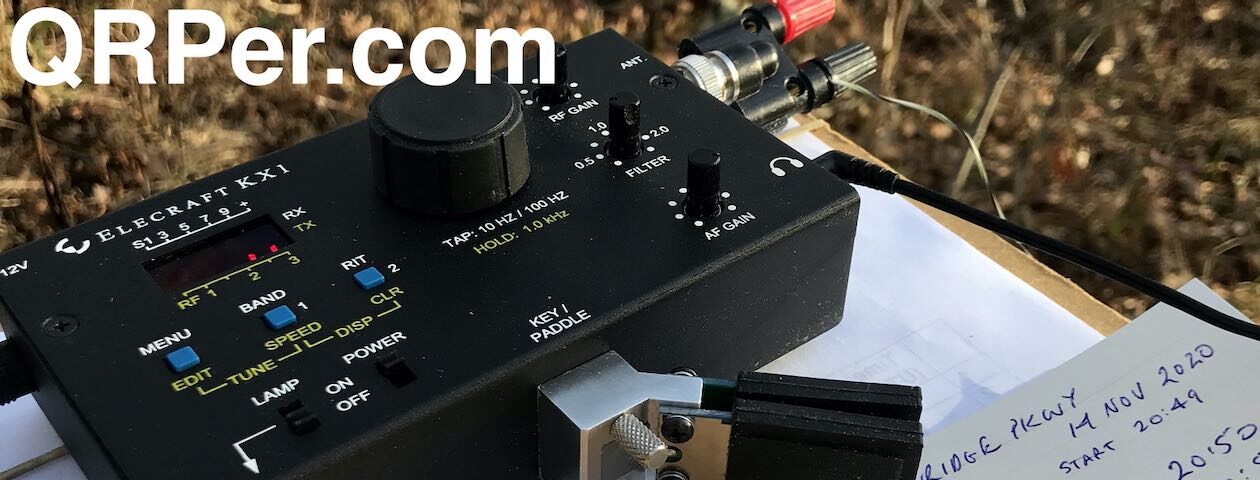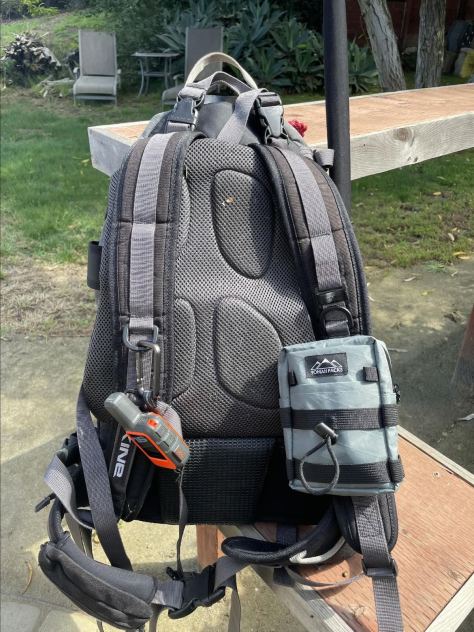
Lately, I’ve been kitting out another fully self-contained field radio kit that would be small enough to fit in my EDC (everyday carry) laptop bag–something super compact.
I’ve been getting some great ideas from those of you who have added your kits to the Field Radio Kit Gallery.
[By the way, if you’ve submitted your kit to the gallery and haven’t seen it yet, note that I’m posting these in the order received and there are many in the pipeline!]
I’ll likely build my EDC field kit around the Elecraft KX1 or the Mountain Topper MTR-3B, then pair it with a good wire antenna.

But this process got me thinking: if money was no object, and I wanted the most compact and versatile multi-band field kit, what radio and antenna system would I choose?
My answer? A kit built around the Elecraft KX2 and AX1 antenna.
In my experience, the KX2 AX1 combo is hard to beat. It’s compact, effective, low-profile, and you can set it up pretty much anywhere.
Let’s explore my reasoning here keeping in mind–in my world–this is a very deep rabbit hole to go down. I’ll do my best–no promises–to keep this as concise as possible:
Compact, Low-Profile, Self-Supporting, and Simple
Here are all of the components of my typical KX2 AX1 field kit:
- Elecraft KX2 with internal ATU and internal KXBT2 battery
- Elecraft KXPD2 paddles which attach to the front of the KX2
- Elecraft AX1 with optional 40 Meter coil and Bi-Pod
- Log book and pencil and/or HAMRS app on phone
This is all that is needed for a field activation.
And if you’re an SSB operator? You don’t really need a microphone because one is built into the KX2 (that said, I’d suggest you build a compact mic if you plan to do a lot of SSB operating).
If I wanted to make this kit even a bit more versatile? I’d add a kneeboard to the list. This gives one the ability to operate without a picnic table.
I recently published a video showing how the KX1 and AX1 can fit on a kneeboard.
Portable and Versatile
 What makes this field kit so portable is that the KX2 is one of the most compact general coverage HF transceivers on the market.
What makes this field kit so portable is that the KX2 is one of the most compact general coverage HF transceivers on the market.
It’s certainly the most compact (at time of posting) when you realize that two important components–the battery and ATU–are internal options.
The AX1 antenna is also incredibly compact–it comes apart in such a way that no one component is longer than about 6 inches. What you see in the photo above is the entire radio and antenna system.
Yes: A Compromise
Sure–and let’s get this out of the way right up-front–the AX1 is a compromised antenna, and being a massive fan of simple wire antennas myself, I know a properly deployed wire in a tree is going to provide better gain each and every time.
Also, people who live in more remote parts of the world–say, Hawaii, the Yukon, or Perth, Australia–where the amateur radio density is sparse within their propagation footprint, the AX1 will not be as productive as it is for me here in the eastern half of North America. Continue reading Coffee, QRP, & Question: Is any field kit more portable and versatile that Elecraft’s KX2/AX1 combo?




























































